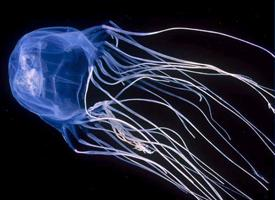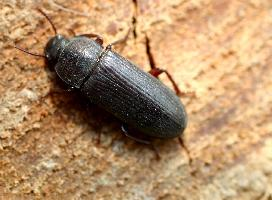
Descrierea animalului
The Japanese lung fluke, scientifically known as Paragonimus westermani, is a parasitic flatworm that belongs to the class Trematoda. This organism is of significant medical importance as it is the causative agent of paragonimiasis, a disease that primarily affects the lungs but can also involve other organs. Although it is called the Japanese lung fluke, its distribution is not limited to Japan; it is found in various parts of Asia including Korea, China, and the Philippines, as well as in some regions of Africa and South America.Adult Paragonimus westermani are reddish-brown in color and have a somewhat oval shape, typically measuring 7.5 to 12 mm in length and 4 to 6 mm in width, making them visible to the naked eye. Their bodies are covered with a tegument, a specialized type of skin that helps in protection and nutrient absorption. The flukes have two suckers, an oral sucker surrounding the mouth and a ventral sucker located on the underside of the body. These suckers enable the parasite to attach to the host’s tissues and feed on blood and tissue fluids.
The life cycle of Paragonimus westermani is complex and involves multiple hosts. The adult flukes reside in the lungs of the definitive host, where they lay eggs that are then expelled through sputum or feces. If these eggs reach freshwater, they hatch into free-swimming larvae (miracidia) that infect a suitable snail intermediate host. Within the snail, the parasites undergo several developmental stages before being released as another type of larva (cercariae), which then infect freshwater crustaceans such as crabs or crayfish. When these infected crustaceans are eaten raw or undercooked by humans or other definitive hosts, the larvae encyst in the small intestine before migrating to the lungs to mature into adult flukes.
Paragonimus westermani infection can lead to a range of respiratory symptoms, including chronic cough, chest pain, and hemoptysis (coughing up blood). In severe cases, the infection can spread to the brain, causing neurological symptoms, or to other organs. Diagnosis is typically made through the detection of eggs in sputum or feces, serological tests, or imaging techniques such as X-rays or CT scans that reveal characteristic lesions in the lungs.
Prevention of paragonimiasis primarily involves educating at-risk populations about the dangers of consuming raw or undercooked freshwater crustaceans. In endemic areas, improving sanitation and promoting the thorough cooking of crustaceans can significantly reduce the incidence of infection.
Treatment for paragonimiasis usually involves the administration of antiparasitic medications, such as praziquantel or triclabendazole, which are effective in killing the adult flukes. With proper treatment, the prognosis for most individuals is excellent, although complications can arise if the infection is left untreated or if it spreads to critical areas such as the brain.
In conclusion, Paragonimus westermani, the Japanese lung fluke, is a fascinating yet dangerous parasite that exemplifies the complex life cycles and host interactions typical of trematodes. Its significance as a pathogen underscores the importance of understanding parasitic diseases, not only for their medical relevance but also for their impact on public health and food safety in affected regions.
Animale similare
Fotografii noi cu animale
Top 10 animale
- Dolphin gull (Leucophaeus scoresbii)
- Diana monkey (Cercopithecus diana)
- Moustached guenon (Cercopithecus cephus)
- Galápagos tortoise (Geochelone nigra complex)
- Japanese macaque (Macaca fuscata)
- Russian tortoise (Testudo horsfieldii)
- Stone loach (Barbatula barbatula)
- Greek tortoise (Testudo graeca)
- Common flying dragon (Draco volans)
- Vendace (Coregonus albula)


